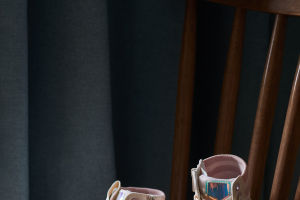Flower arrangement is a form of art that involves placing flowers in containers, such as vases, pots, or plates, to create a visually appealing composition.
Unlike traditional planting, flower arrangements typically consist of cut flowers, branches, leaves, and other parts of the plant, arranged in a specific manner to express a particular theme or emotion.
The selection of flowers and their arrangement is not random but follows certain creative rules, resulting in a beautiful composition that is pleasing to the eye and brings spiritual happiness.
Flower arrangement has a rich cultural heritage, particularly in China, where it is considered an ancient traditional art form. In China, a flower arrangement is a way of expressing personal emotions and is also a form of entertainment in everyday life. The tradition of flower arrangement stems from the ancient love of flowers and has been a part of Chinese culture for centuries.
There are two methods of arranging flowers in a bouquet: tying with thin iron wire and using a special receptacle filled with flower mud. The first method involves wrapping each flower and lining the leaf with thin iron wire and green tape before modeling.
The second method is simpler and involves inserting the flowers into a receptacle filled with flower mud to hold them in place.
Here is a brief overview of the different forms of flower arrangements:
1. Ladder - This form of arrangement resembles a staircase, with each flower placed at a distance from the other, creating a step-by-step feeling. Point-shaped flowers, such as roses, carnations, chrysanthemums, and tulips, are ideal for this style.
The flowers can be inserted in steps at the bottom or grouped together at the height, with the blooming flowers placed at the bottom and smaller budding flowers on top.
2. Overlapping - This style is characterized by overlapping flat leaves or flowers, such as Milky way leaves, and sunflowers. The gap between each piece is small, and the insertion method involves covering the bottom with a sponge or expressing the beauty of the overlapping leaves alone.
3. Stacked - This style involves the accumulation of many flowers or colors, creating a regular undulating shape like waves. The flowers should have short stems, be closely placed together, and have no gap between them. Dotted or block-shaped flowers, such as roses, carnations, and chrysanthemums, are ideal for this style.
4. Focus - The focal point is the most prominent part of the arrangement, which is highly visible from the front or the side. This style is best achieved with single-sided flowers with a unique shape, color, or large size. If the flowers are small, a larger quantity is needed to create the focal point. Flowers such as perfume lilies, birds of paradise, and Phalaenopsis are ideal for this style.
5. Group Type - This style is suitable for all types of flower shapes and involves grouping flowers of the same type and color together. The groups should be partitioned and have a distance between each group. The length of the flowers can be high or low, depending on the shape, and dotted or linear flowers, such as roses, carnations, and anthurium, are ideal for this style.
In conclusion, a flower arrangement is a beautiful and fascinating art form that has been an integral part of many cultures for centuries. From the traditional ladder style to the modern focus style, flower arrangements continue to be a source of inspiration and bring joy to those who admire them.


